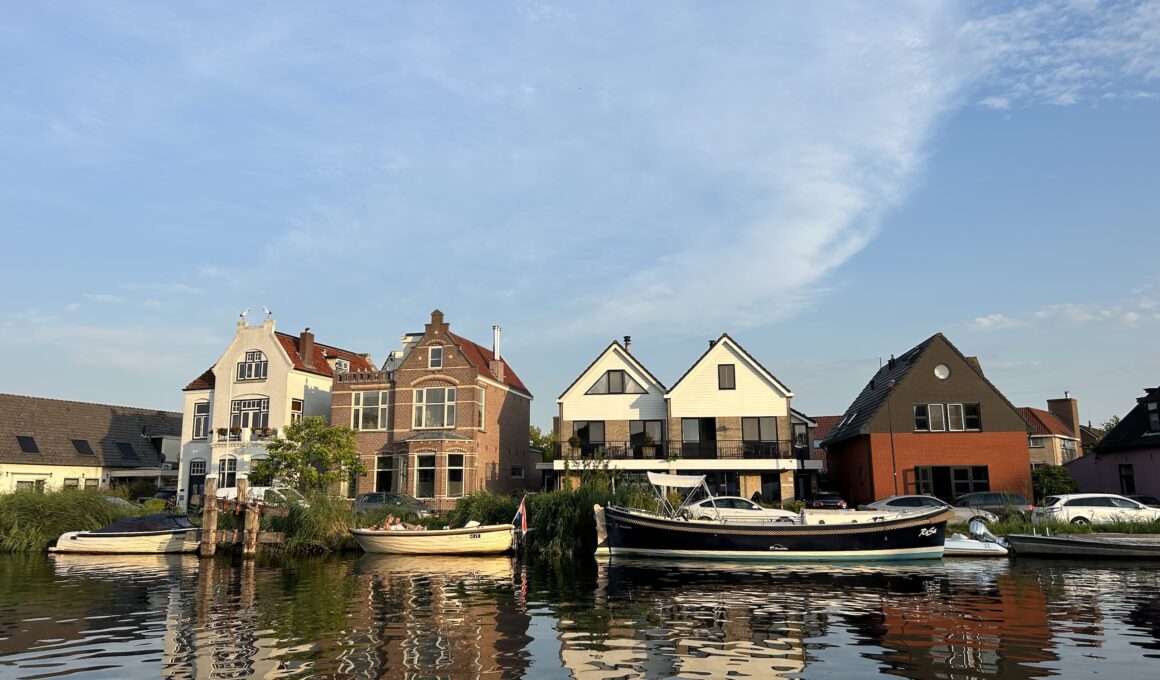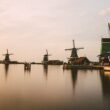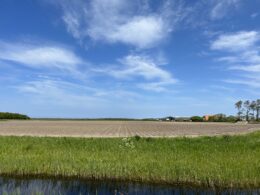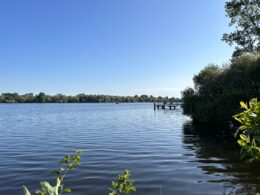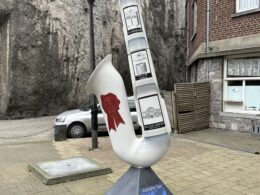On a lovely Saturday afternoon, we prepared for a unique boat journey down the famous Amstel River.
With the warm Dutch sun shining down on us and anticipation building, we embarked on an adventure that offered a combination of natural beauty, fascinating history, and the serene waters of the Amstel River.
Renting the Boat at Aemstel Boating
Booking our ride for the day was an exciting endeavour. We rented our vessel from the reputable Aemstel Boating, a popular choice among locals and tourists. And let me tell you, their service was top-notch.
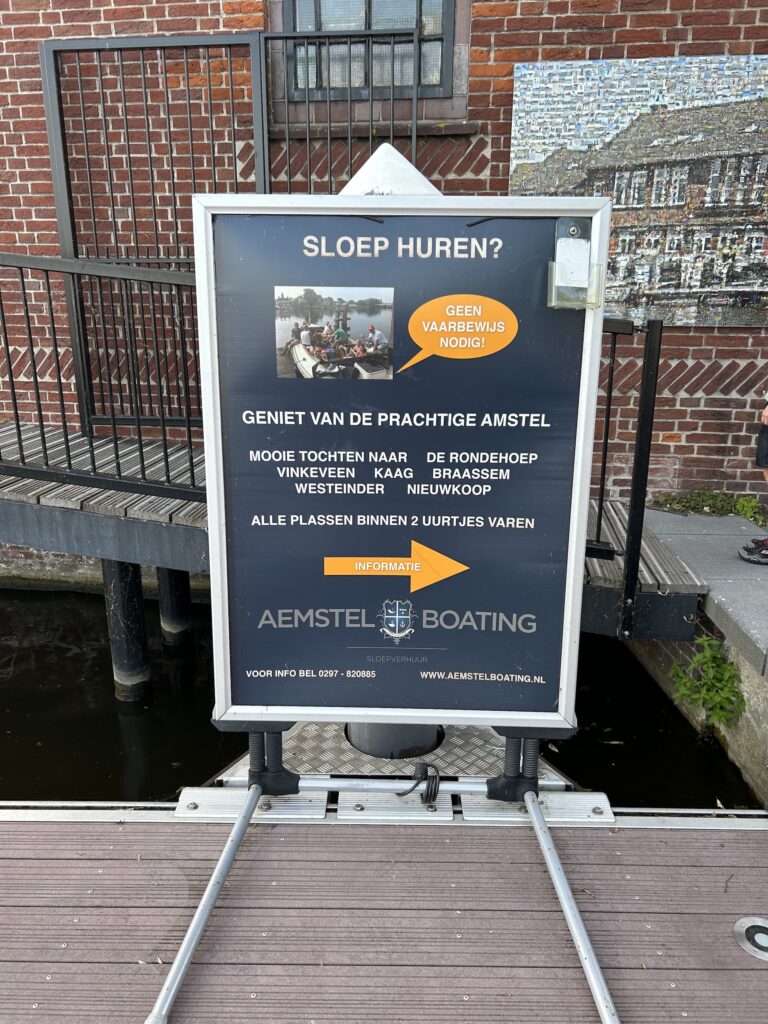
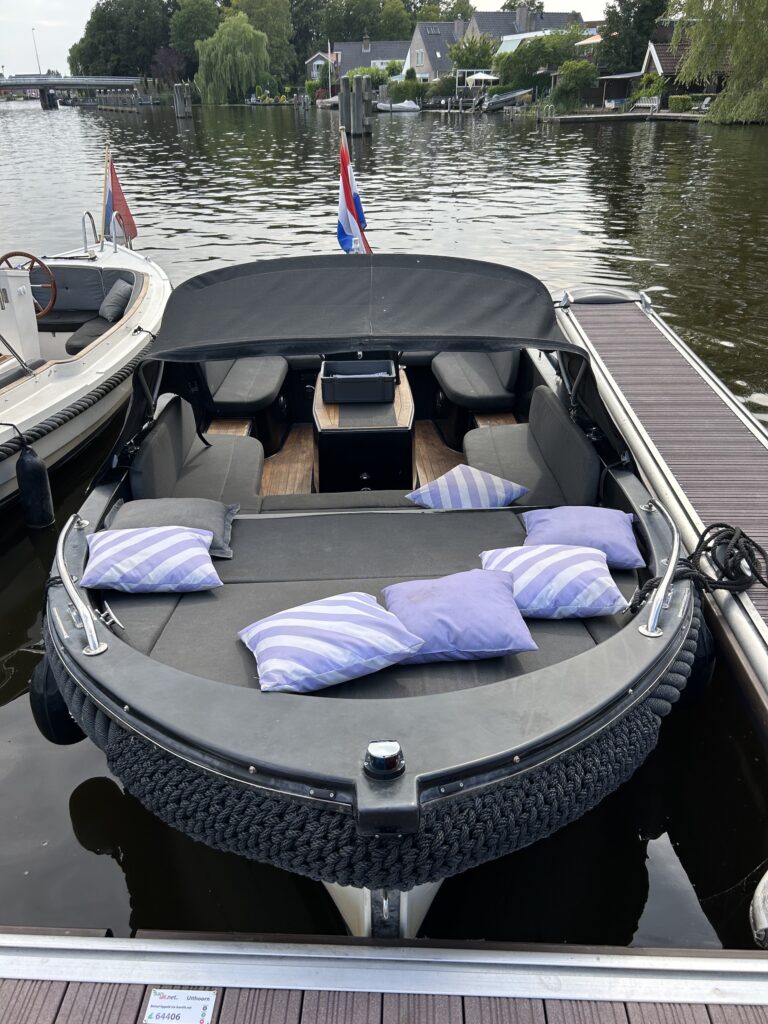
We opted for the fabulous Isloep 585, a sturdy boat just over six meters long and two meters wide. It was the perfect choice for our group of five, with a sundeck that had us ready to bask in the warm Dutch sun and a diesel-powered engine that promised a smooth sail.
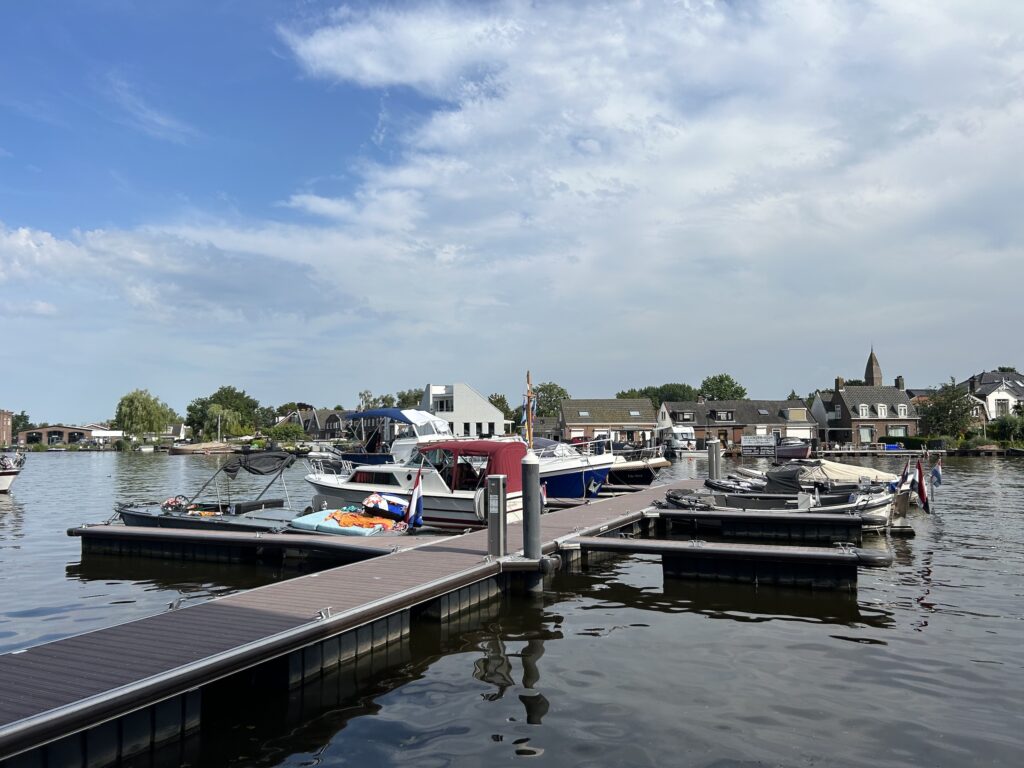
So there we were, our party of five, aboard a boat equipped for six, getting ready to carve our way through Amsterdam’s aquatic arteries.
North on the Amstel River
As we navigated our reliable boat towards the north on the Amstel River, we encountered many stunning natural scenes, lively urban areas, and significant historical sites.
Each bend and curve on our water journey revealed a distinct aspect of Dutch culture, transforming our boat ride into an unforgettable expedition of exploration and amazement.
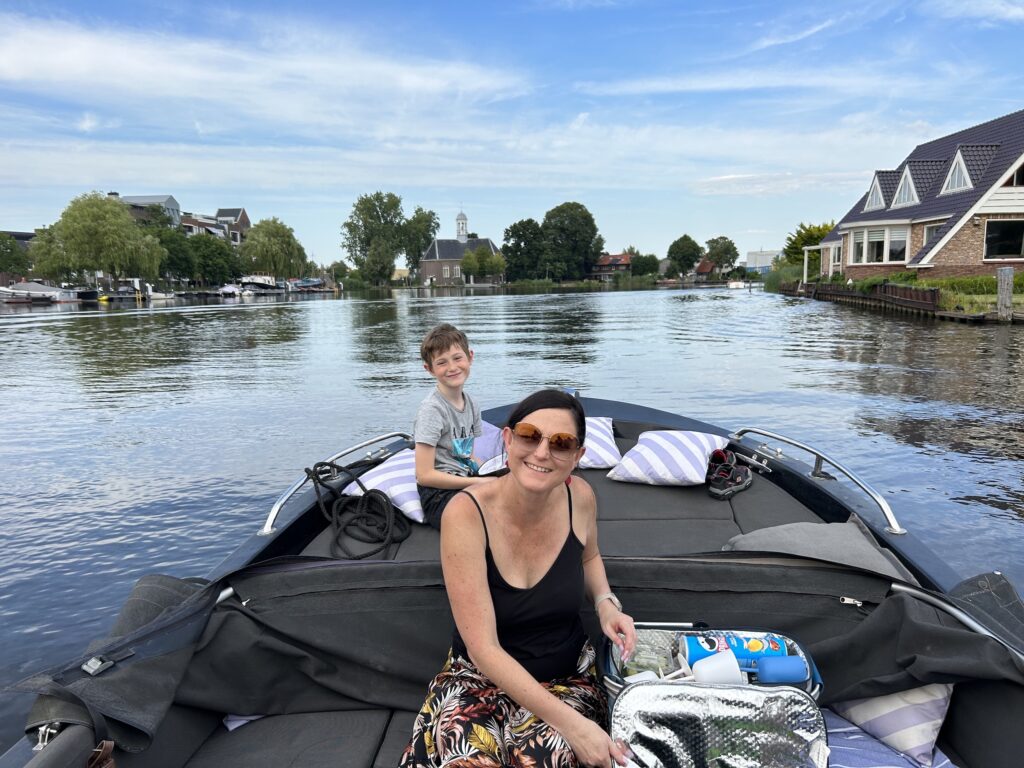
The Amstel River is the heart of Amsterdam, and its name has an interesting origin. It is believed that ‘Amstel’ comes from the Old Dutch term ‘Aeme-stelle’, which means ‘an area with a lot of water’.
This term also has roots in the old Frisian language, spoken in the northern parts of Holland, where it means ‘two water flows that come together’. This interpretation is supported by the fact that the Drecht and Kromme Mijdrecht streams converge south of Uithoorn.
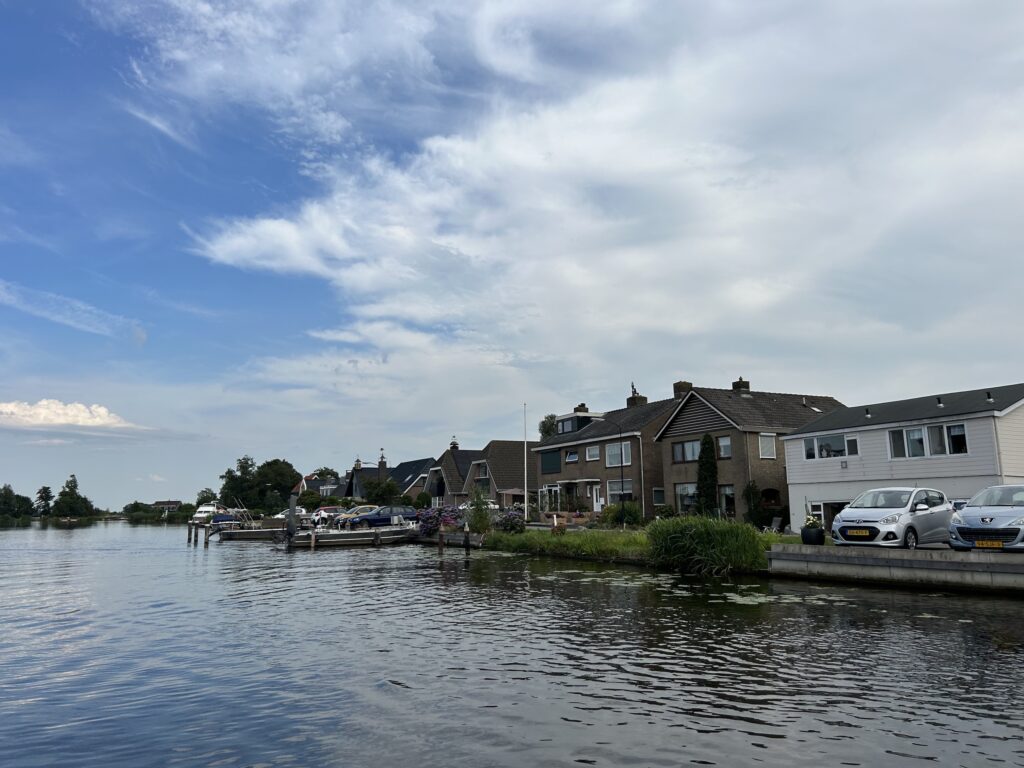
The area surrounding the Amstel River has been affectionately referred to as Amstelland for many years. It is believed that there used to be another river flowing to the south of the Amstel before the 12th century.
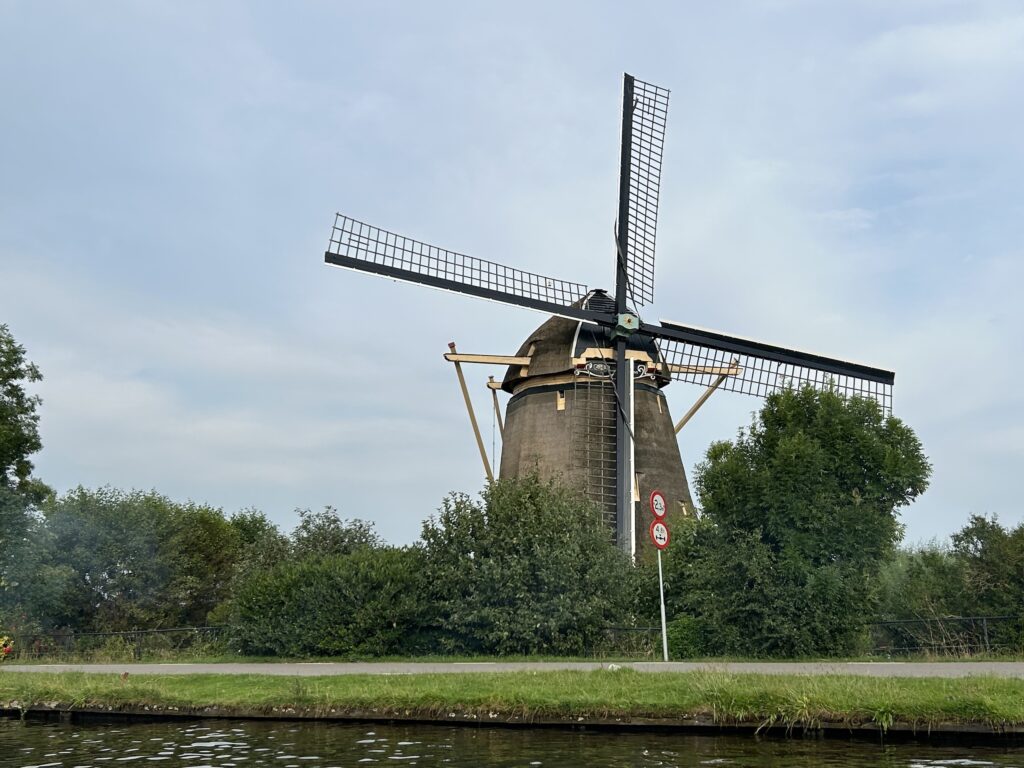
Due to the gradual shrinking of peat, the depth of Amstelland decreased, which caused the Amstel to change its direction and flow eastward.
Nes Aan de Amstel
Not far from Uithoorn, you can find a charming village called Nes aan de Amstel next to the Amstel River. Surrounded by lush greenery, this place looks like a picturesque postcard.
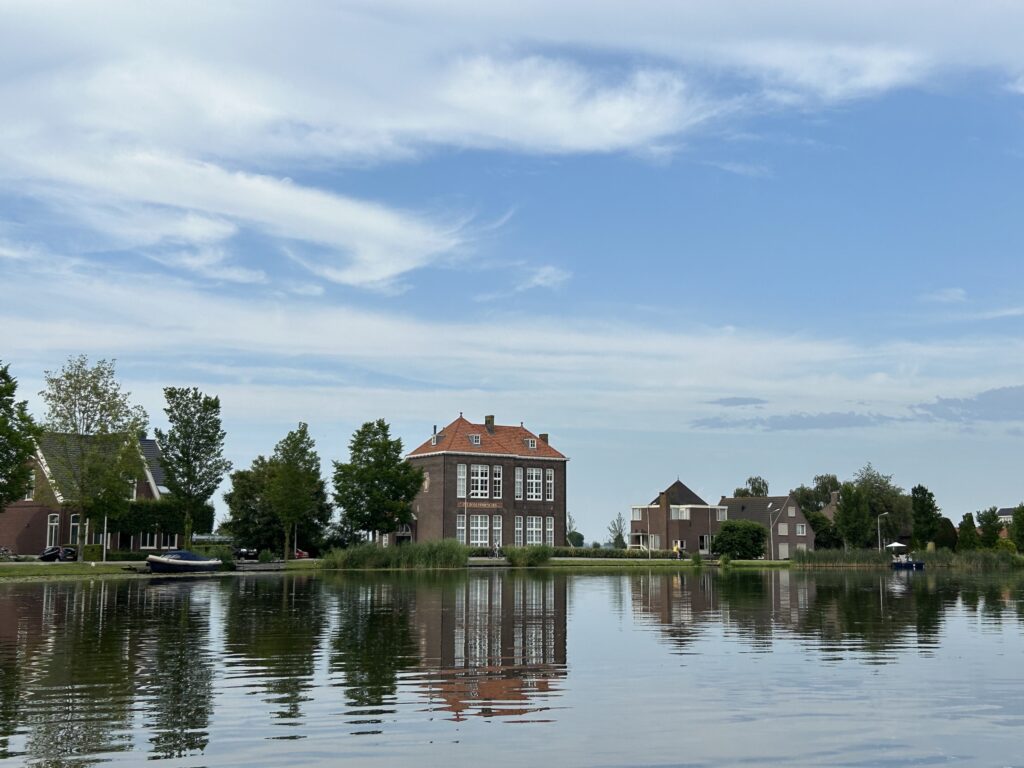
Nes aan de Amstel is a peaceful and simple village. The houses come in various colours and styles and complement the lush green countryside. The calm waters of the Amstel River create a soothing atmosphere for village life.
The village perfectly blends nature and humanity, creating a charming environment for everyone to enjoy.
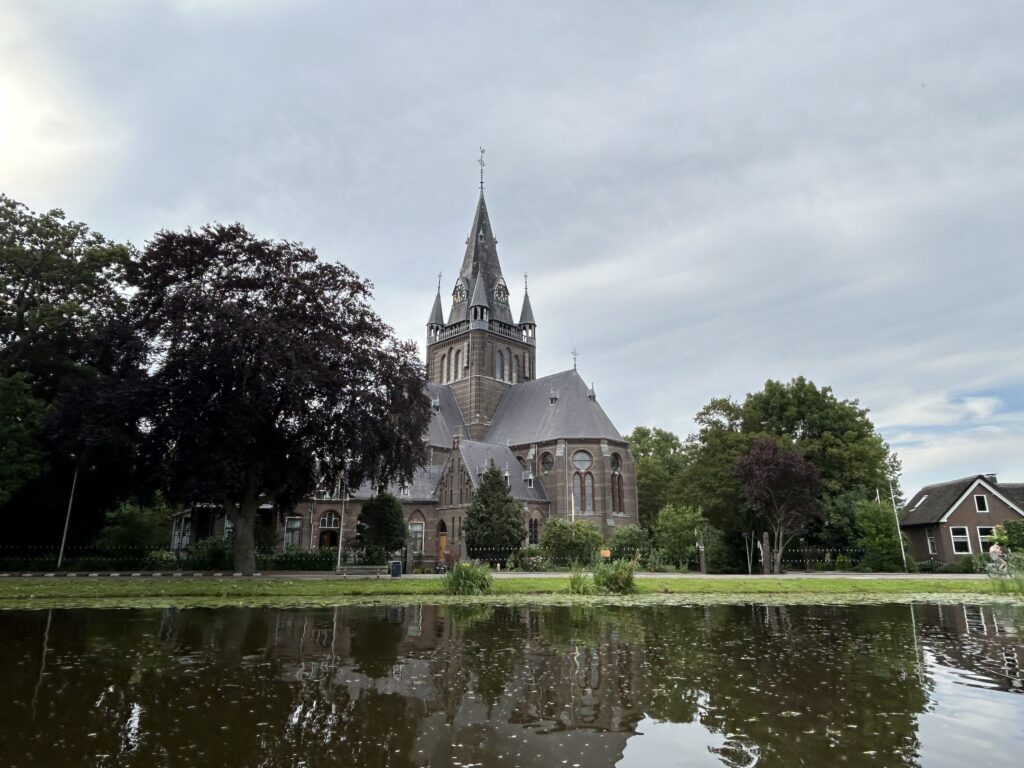
Listen to the birds chirping, watch kids play by the river, feel the cool breeze whispering through the fields, and smell the rich earth after a light summer rain.
While Ouderkerk aan de Amstel is a historical treasure trove, Nes aan de Amstel is a charming reminder of the timeless appeal of rural life. This experience will leave you feeling refreshed, grounded, and inspired.
Rondehoep
Have you ever seen the Rondehoep region? It’s truly breathtaking.
Located to the west of where the Waver River meets the Amstel, this area captured my heart with its idyllic scenery. It spans over 1,266 acres and is a lush paradise, with 900 acres of protected meadow filled with greenery, peaceful streams, and natural beauty.
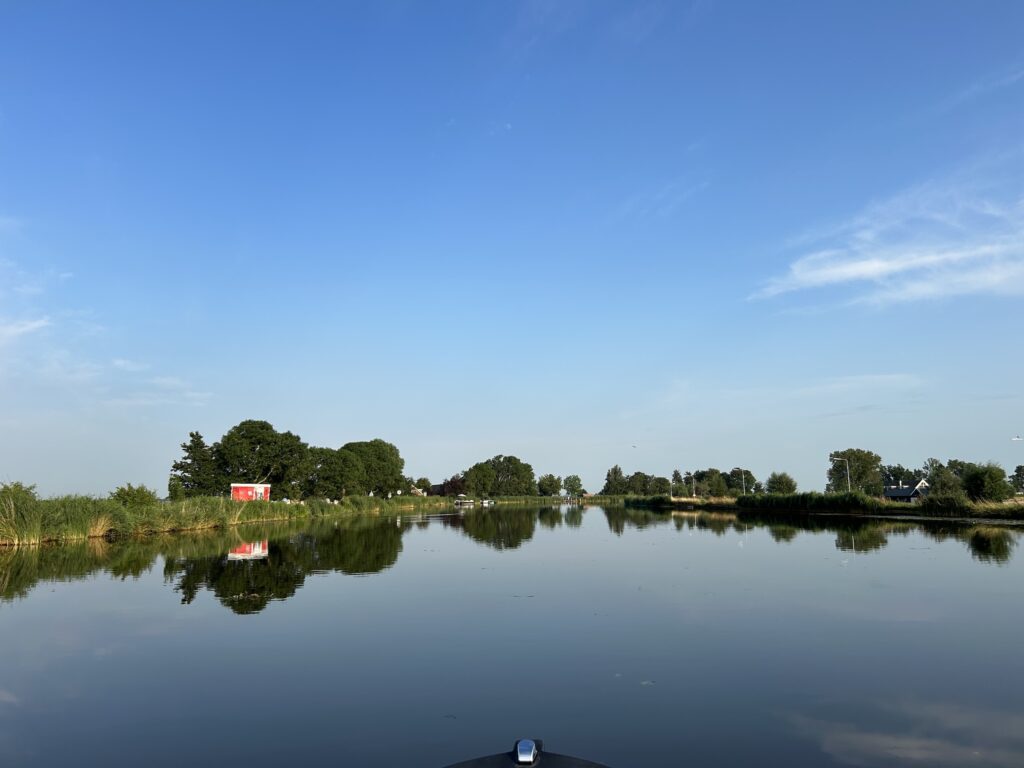
As Rondehoep meets Ouderkerk on the Amstel, a charming town emerges. Within this scenic area lies a 165-acre meadow that serves as a safe haven for birds. Designated as a breeding site since July 2006, it is heartening to see the city’s efforts to protect and care for wildlife.
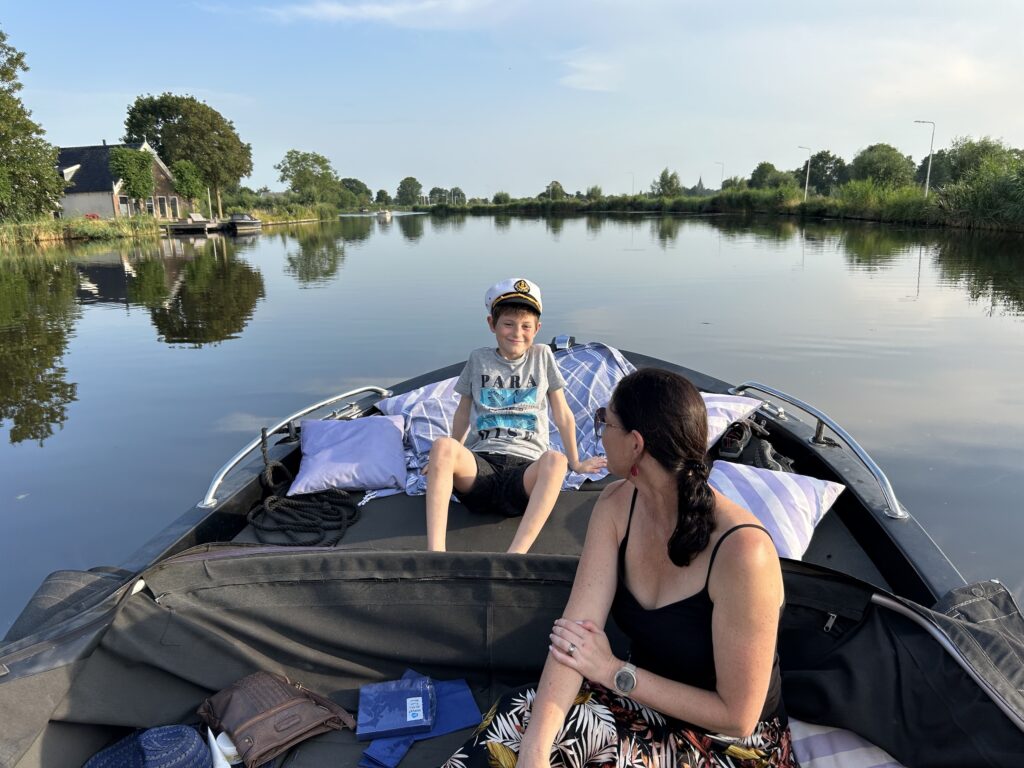
It’s no surprise that Rondehoep is considered one of the most beautiful areas in the Netherlands. It’s not just visually stunning, but the air feels cleaner, the sounds of nature are more prominent, and it reminds you of life’s simple pleasures.
Rondehoep is like natural poetry for your eyes and soul.
Ouderkerk aan de Amstel
Nestled in the arms of Rondehoep lies a charming place with a rich history – Ouderkerk aan de Amstel. This settlement dates back to the 10th or 11th century, making it the oldest in the area and filled with timeless stories.
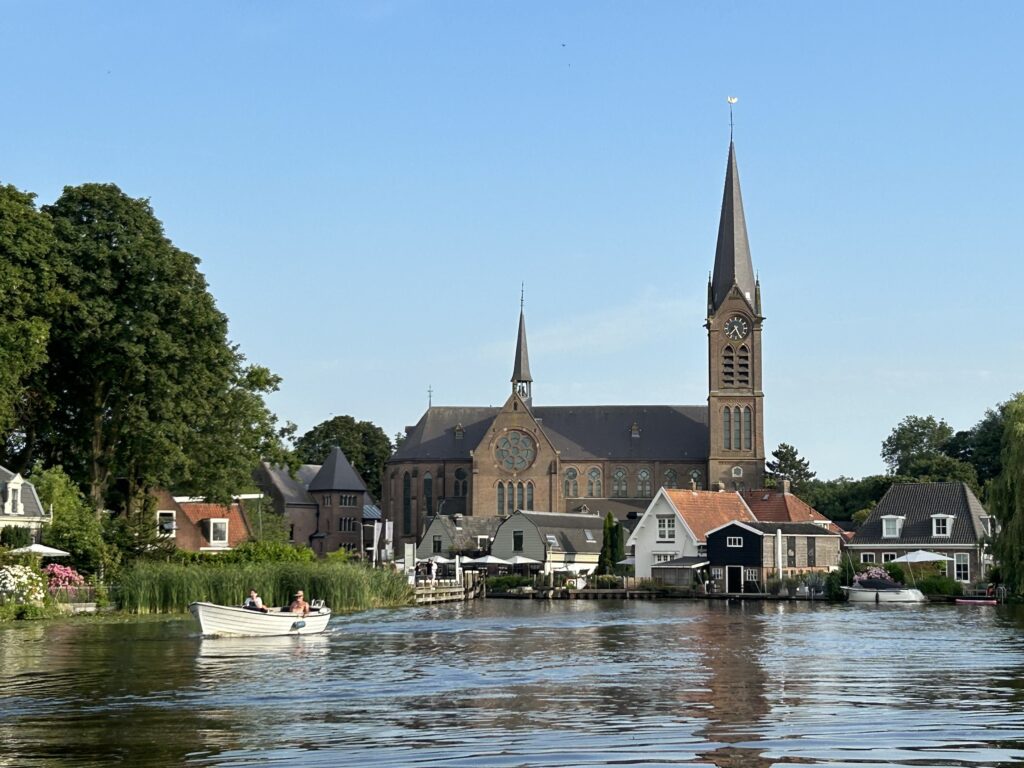
The town played a crucial role in the history of the region. In 1275, a dam was constructed at the entrance of the Amstel River. This simple dam eventually became the namesake of the famous city we now call Amsterdam. However, its significance was not fully realised at the time of its construction.
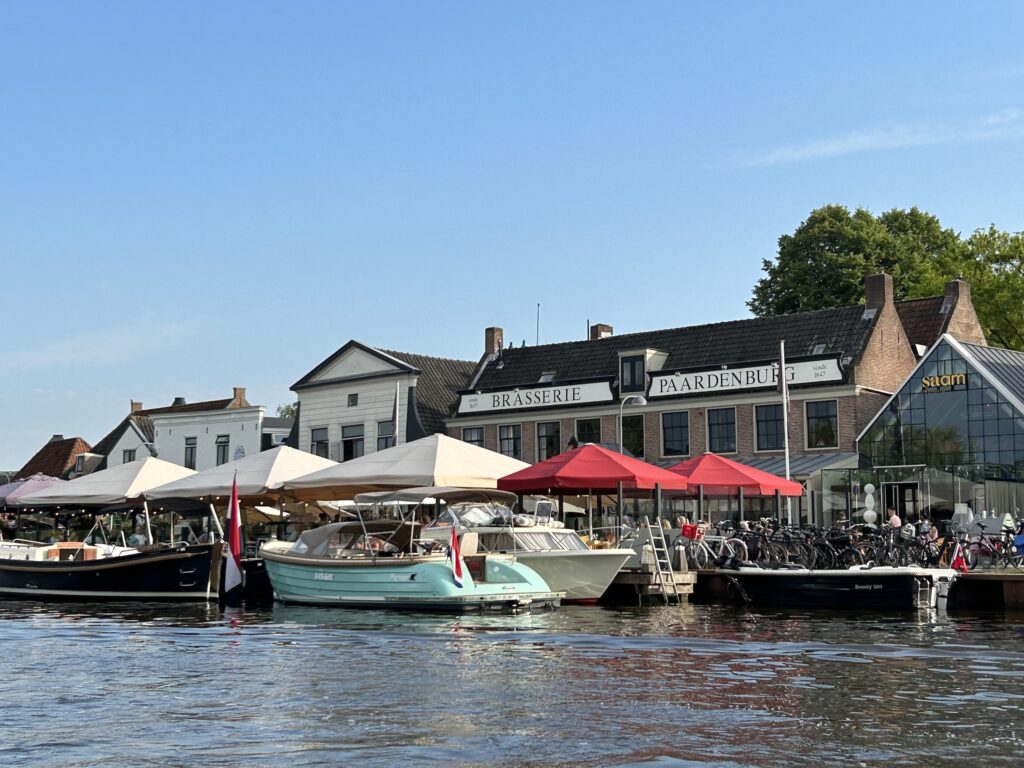
Amsterdam’s growth was propelled by the flourishing trade that came with the expansion of its canals. The city quickly transformed into a bustling hub and was eventually named the capital city. This incredible development started with Ouderkerk and a modest dam.
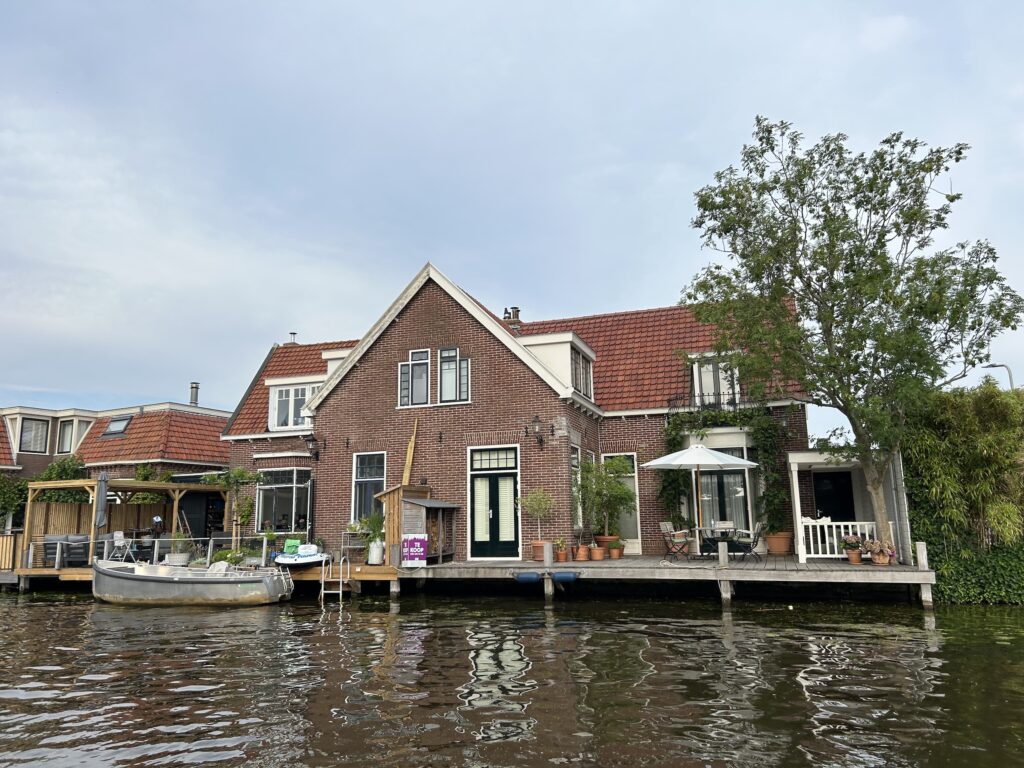
Ouderkerk, despite being near Amsterdam, has a relaxed and calm atmosphere that’s refreshing. The streets are home to charming local eateries that serve Dutch delicacies, quaint shops with handmade crafts, and ancient buildings that showcase the town’s intriguing history.
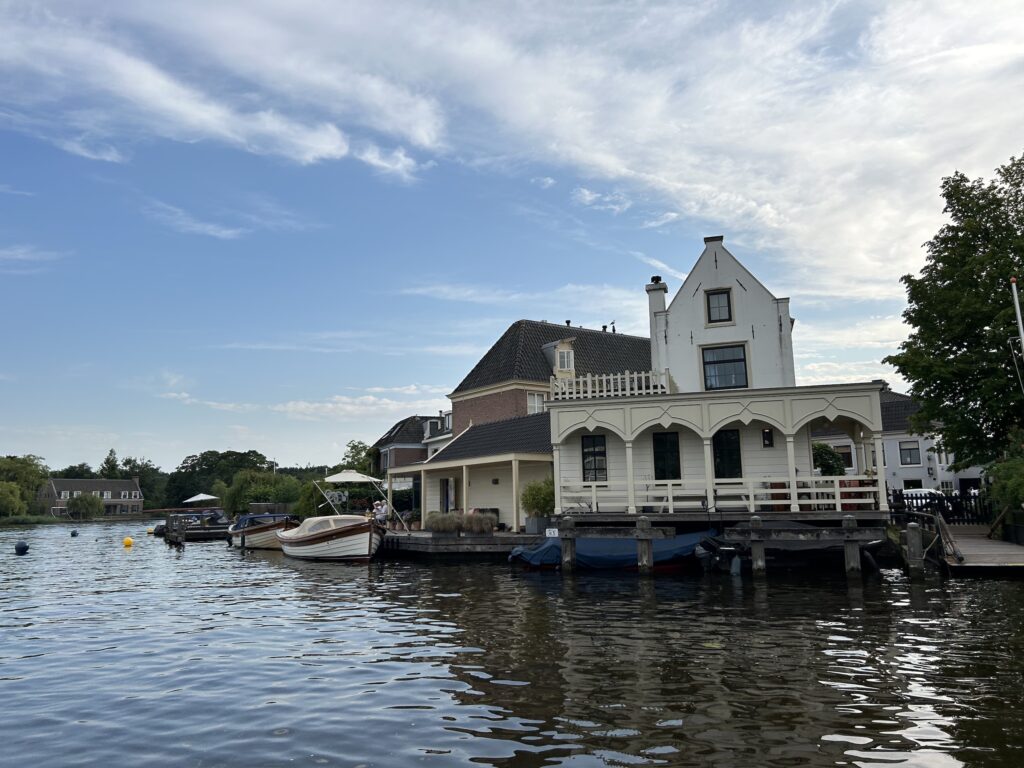
If you visit Ouderkerk aan de Amstel, you’ll feel like you’re flipping through the pages of a history book that’s alive, with each chapter more captivating than the last. It’s a humbling and awe-inspiring experience that reminds us of how much progress we’ve made.
Back in Uithoorn
Just as we thought our day couldn’t get any better, we realised we’d made excellent time and had 20 glorious minutes left on our rental. We decided to take advantage of it by steering our Isloep downstream from Uithoorn, giving us the chance to explore a lesser-traveled stretch of the Amstel.
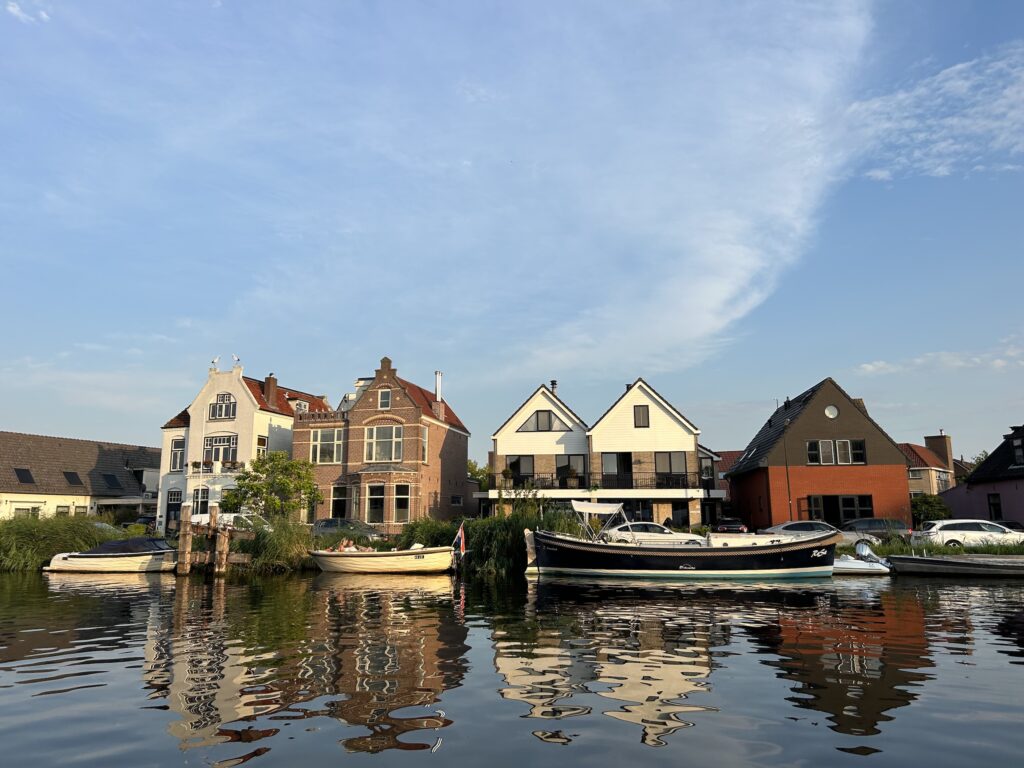
As we cruised along, we were struck by the beauty of the charming houses lining the riverbanks, each with its own unique architecture and lush greenery. The peaceful atmosphere offered us a glimpse into the everyday life of Amsterdam, which was just as rich and picturesque as its famous landmarks.
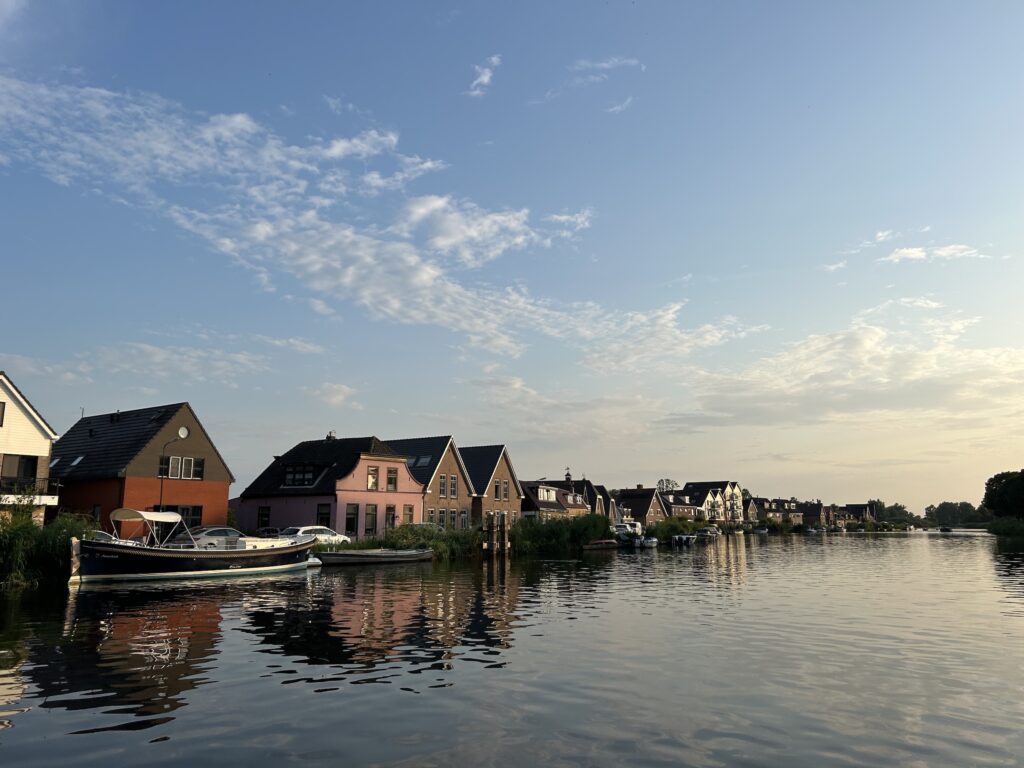
This spontaneous detour was the perfect ending to our adventure.
Finally …
As our Amstel boat trip came to an end, we saw the city’s reflection on the river waving us a warm goodbye.
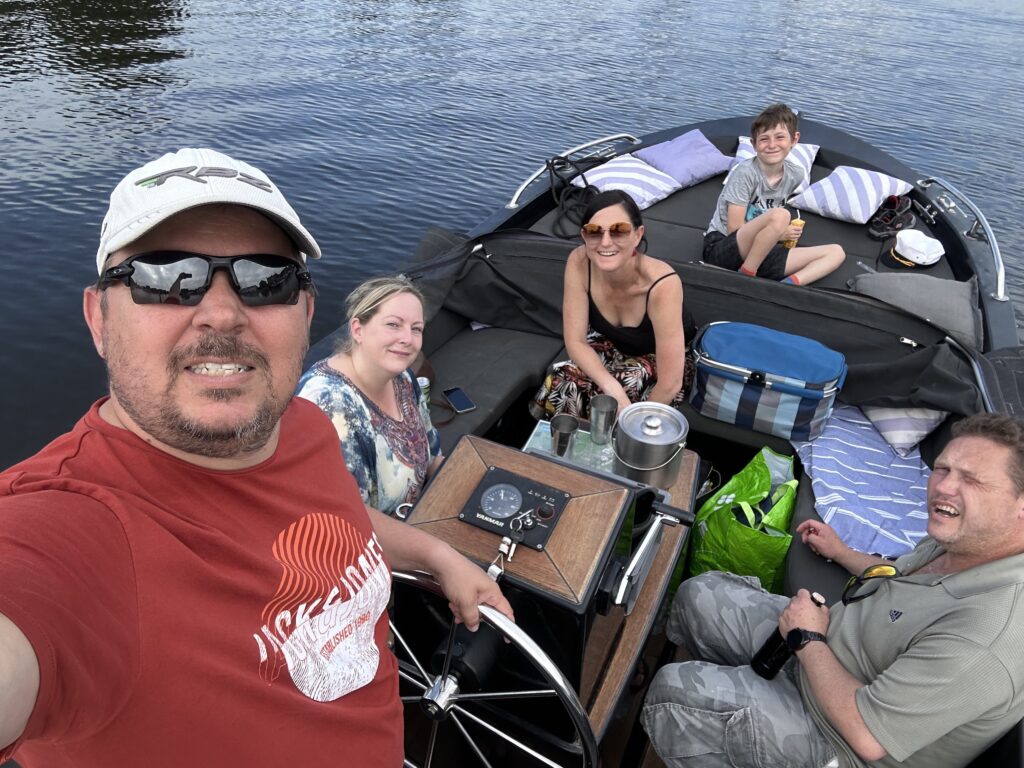
We left with hearts full of joy and minds enriched with new experiences, feeling as though a piece of our souls will always be intertwined with the flowing tales of the Amstel.
We cannot see our reflection in running water. It is only in still water that we can see.
Zen Proverb



